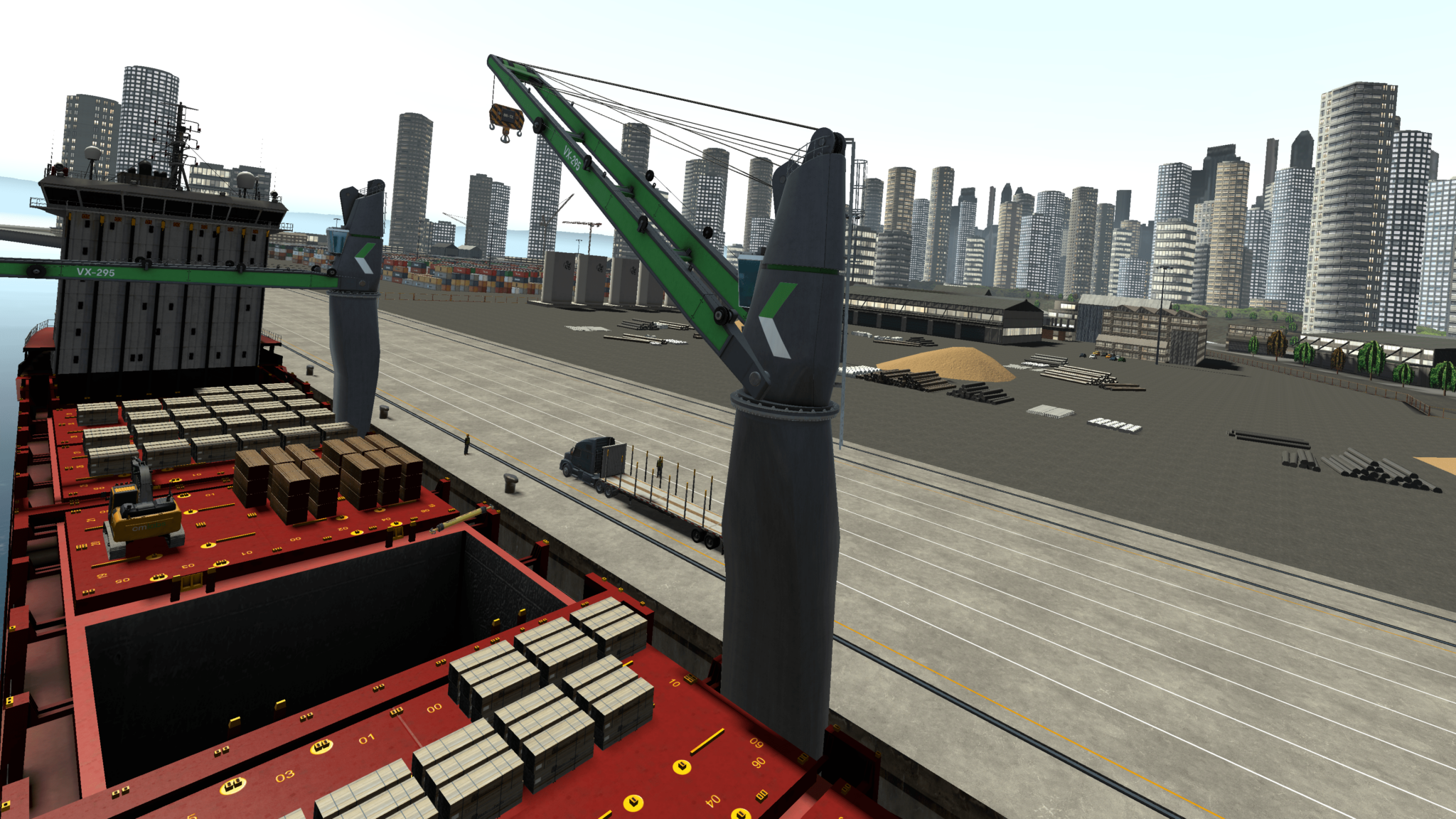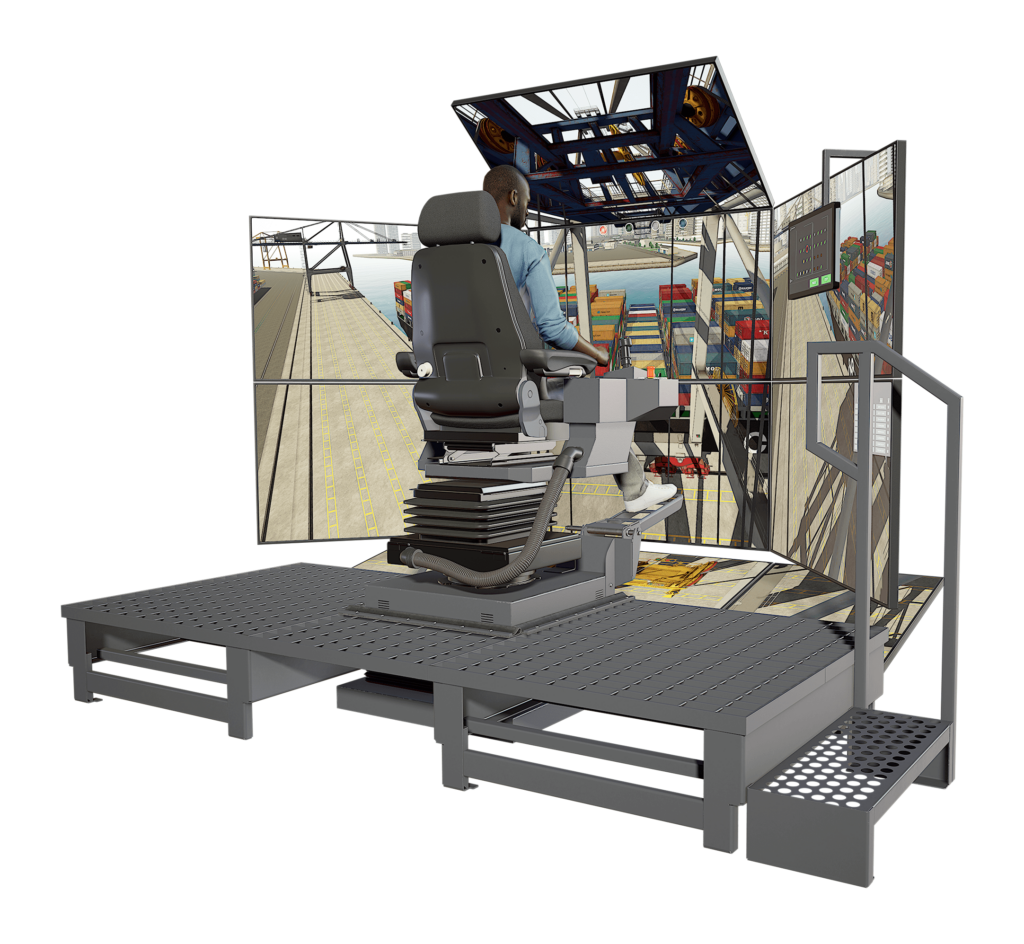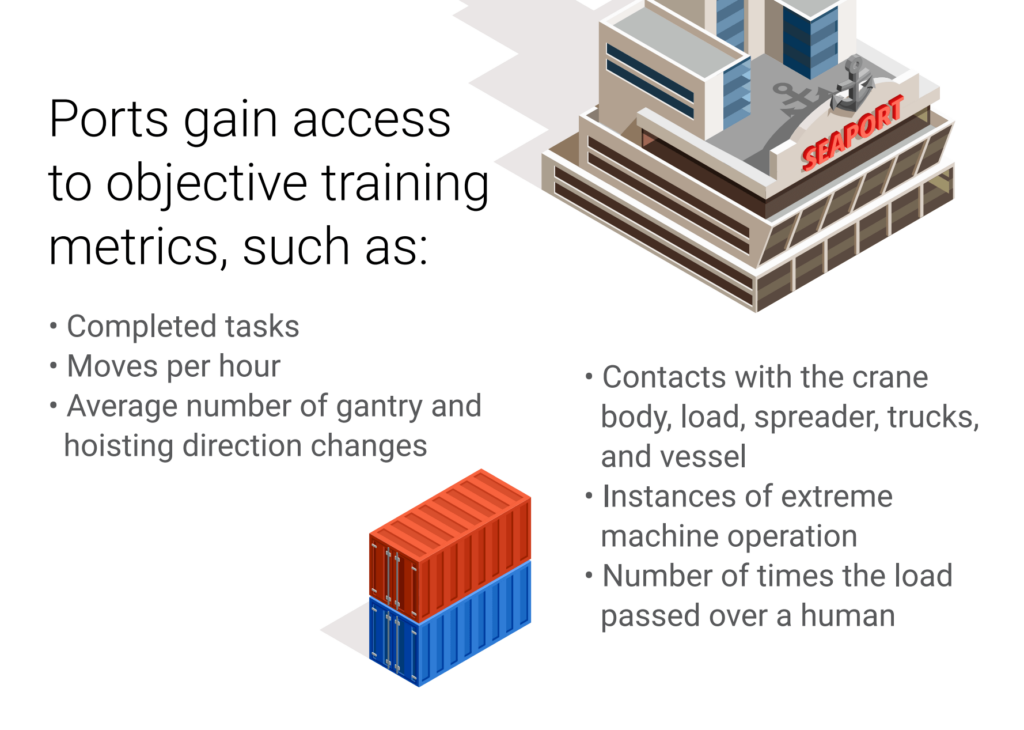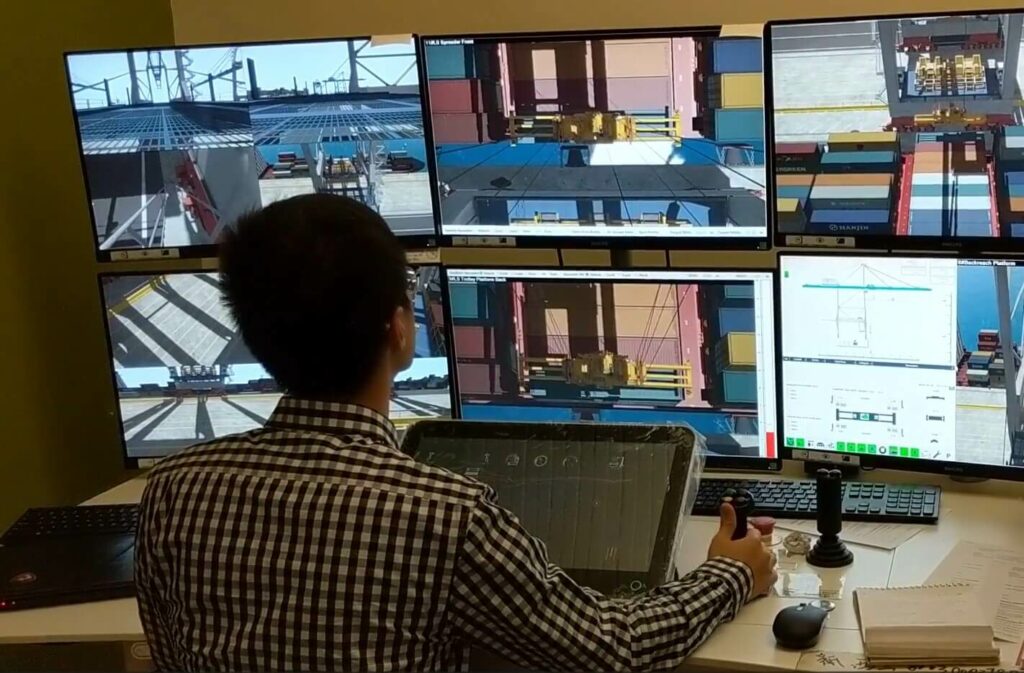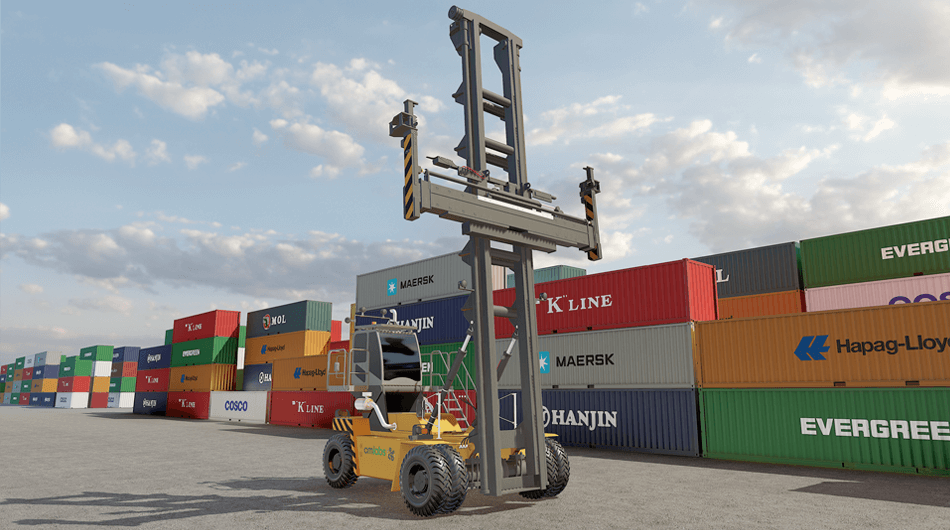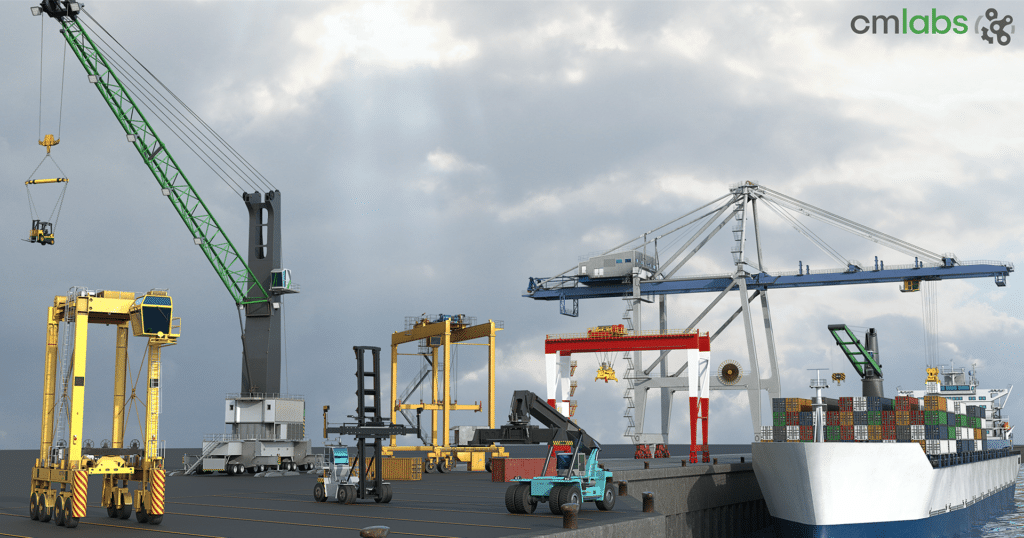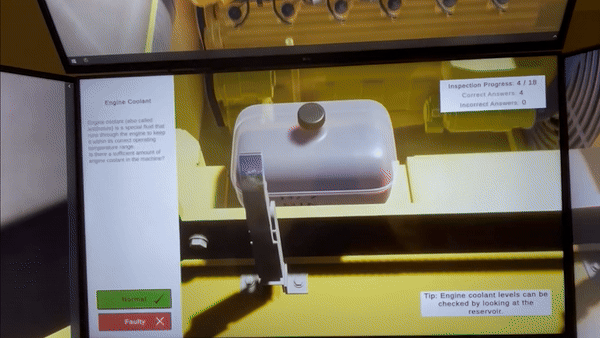Ports today face complex challenges:
- Unexpected events and continued disruption globally have placed unprecedented strain on ports and required redirected shipping routes.
- Increased cargo volumes, as well as increased bulk and breakbulk volumes, have intensified pressure on port capacity.
- Labor shortages have exacerbated productivity challenges, as unskilled operators must be trained and take longer to complete tasks.
- Aging infrastructure, additional truck driver and worker shortages, and bottlenecks affecting inland transport systems have made it harder for cargo turnaround.
Within this environment, port and terminal owners and managers need to not just maintain previous container terminal productivity levels, but surpass them. The question is simple: How?
How Does Simulation Optimize Terminal Productivity?
While simulation can’t address every productivity challenge that ports face, it can be an excellent tool for supporting quite a number of productivity-focused initiatives.
So, how can terminal performance be improved with simulation? It can help with:
1. Improving Recruiting Initiatives Addressing the Port Labor Shortage
As many managers navigate a crushing port labor shortage, the ability to quickly recruit and train new operators becomes a strategic advantage. This is an area where simulation training can be especially beneficial.
Simulation can help recruiters appeal to the next generation of workers as well as non-traditional labor pools. The Port of Tilbury (London), for example, has found great success recruiting veterans with the help of simulation. “The military are fascinated by what we were doing with simulation,” says Simon Harper, Learning & Development Manager and Director, Tilbury on Thames Trust, “It attracts veterans to our programs, and it’s a remarkably effective tool for recruitment.”
2. Streamlining Hiring and Screening Processes With Simulation
Simulation can help streamline hiring and screening processes by testing new candidates in virtual environments and objectively scoring their results.
Why is candidate screening with simulated exercises so effective? Because it confirms an operator’s experience and abilities before they step into the cab. If a candidate lies about or misrepresents their experience, recruiters will find out before the operator lowers productivity or even causes a safety incident.
Using simulation as a screening tool also helps recruiters identify promising new candidates with no prior experience. Rather than invest hours of training into a new hire who doesn’t have the hand-eye coordination and natural aptitude to ever become a proficient operator, recruiters can identify talent early in the hiring process.
3. Reducing Training Times With Simulation
Simulation helps speed up and standardize training times to get new operators working quickly and safely. Without simulation, training times can be notoriously unpredictable due to weather disruptions, shipping schedules, and equipment availability—especially when training new operators on ship pedestal cranes. Disruptions caused by ship availability, for example, can break training continuity and turn a 2-week training program into a month-long endeavor.
“Productivity is a big driver behind bulk operations and when you put somebody who’s unfamiliar with the machinery up there it’s not long before you start getting questions as to why productivity is falling or why it’s taking longer than it had before.”
This is where simulation training can make a substantial difference to container terminal productivity. With a simulator, trainers can ensure:
- Training is not disrupted, allowing new operators to reach proficiency faster
- Training times are consistent, allowing for better forecasting
- Safety incidents caused by inexperienced operators are reduced or avoided altogether
- Progress is quantified, allowing for objective evaluation
- Weaknesses are identified and addressed with targeted practice
- New operators feel confident when starting work on real equipment
- Productivity disruptions from new operators are kept to a minimum
Ports that have integrated simulation into their training programs have experienced substantial reductions in training times and costs. The Port of Tilbury (London), for example, was able to reduce the amount of time new hires spent in their basic training program. “Prior to the Vortex simulator, new operators could be seven weeks into a program, and still on basic training,” says Simon Harper. But by using simulation, the Port of Tilbury was able to reduce that time to a standard three-week interval. “Having the simulator really does ensure that after three weeks, people are getting through the training system.” Harper notes, “It eliminates the opportunity cost of having a non-skilled operator on site.”
Their case is not an isolated incident. The Halifax Employers Association, a strategic partner of the Port of Halifax, was similarly able to reduce their training times. It now takes new operators 14 days to complete their training, rather than up to a month. And at Flinders Adelaide Container Terminal, similar benefits have been observed. Tony Couzner, Training Superintendent at Flinders Adelaide Container Terminal, notes that “Typically, a new crane operator requires 180 hours of training on average to meet the required proficiency standards. With the simulator, the new trainees have managed to meet and exceed the level required in around 100 hours.”
4. Upskilling and Cross-Skilling to Improve Container Terminal Productivity
Simulation training can also function as a terrific tool for upskilling and cross-skilling experienced operators.
How does simulation improve productivity through upskilling and cross-skilling?
- By allowing trainers to recreate past incidents for operators to practice on
- By simulating difficult and rare conditions like bad weather, container hazards, and more
- By providing objective metrics that identify strengths and weaknesses
- By providing advanced exercises for additional training
In addition, many simulators today come with hot-swappable controls. This allows trainers to easily switch between training programs for different equipment. Ports can use one simulator to train operators on a vast array of quayside and yardside equipment, ranging from straddle carriers to ship-to-shore cranes.
“They were already experienced and competent crane operators, but by focusing on difficult operations such as stacking 20-foot containers within 40-foot cells inside the vessel and working blind (using only cameras and radio guidance to load containers in the hold), they were able to improve their loading time.”
5. Obtaining Objective Data on Operator Performance
Measuring port performance and port productivity data is essential to boosting productivity. Objective data also makes it easier for trainers to track an operator’s progress.
With this data, trainers are able to objectively evaluate operators and objectively observe progress. This can make it easier to identify areas in need of improvement, as well as the effectiveness of training initiatives.
“With the Vortex simulator you can generate a reporting graph that shows how many times a trainee pulled back and forth to try and get a box into the guides of the ship. A lot of people like to think ‘I was quite smooth on that’. But the graphical evidence is a powerful tool for disabusing them of that view! That’s the benefit of the assessment capabilities of the simulator. It’s objective, whereas clearly humans are subjective.”
Port of Tilbury (London)
Simon Harper
Learning & Development Manager and Director,
Tilbury on Thames Trust
6. How to Improve Port Productivity by Improving Operator Efficiency
When we look at port productivity indicators, operator efficiency lies at the heart of many important KPIs. Operator performance, whether good or bad, will have a significant impact on overall port productivity. Fortunately, simulation is capable of quickly improving operator performance. How?
By allowing operators to objectively evaluate their strengths and weaknesses, simulation opens the door to targeted practice. Operators can repeat the same exercise, observing data on their performance to gauge how much they have improved. This concentrated approach allows for stunning real-world results. ZHD Stevedores, for example, was able to halve the amount of time it took operators to move bulk material.
Whether training experienced operators or new recruits, simulation can make a substantial difference to a port’s productivity.
7. Improving Semi-Automated and Automated Container Terminal Productivity
It’s important to include the role of automation and semi-automation when discussing port productivity. According to Guidehouse Insights, automated port technology sales are projected to grow from less than $600.0 million USD in 2023 to nearly $2.0 billion USD within a decade.
Automation and semi-automation take careful consideration to implement effectively. According to McKinsey, ports have seen a 7% to 15% dip in productivity when utilizing automated solutions. However, that same McKinsey report also noted that careful planning and management can ease the transition into automation, allowing successful ports to reduce operating expenses by 25% to 55% while boosting productivity by 10% to 35%.
How does simulation help ports successfully transition to automation or semi-automation? By providing the in-depth training port operators need when adapting to this new reality. According to McKinsey, as many as 75% of ports face a shortage of operators with the necessary experience in automation.
Experienced operators need to make significant changes when adapting to autonomous or semi-autonomous work completed from a remote operating station (ROS). Dedicated simulation training tools for remote operation exist to help with this transition:
- ROS simulation training for semi-autonomous work teaches operators to make use of operator assist functions, use a profile scanning system, and adapt to a control room environment.
- ROS simulation training for autonomous work teaches operators how to work with exception cues, prioritize tasks, and adapt to a control room environment.
Simulation Training Improves Container Terminal Productivity
Simulators can help improve container terminal productivity in a number of ways. By assisting in recruitment efforts designed to ease labor shortage woes, speeding up and standardizing training times, helping with upskilling and cross-skilling, improving operator efficiency, providing objective data on operator performance, and assisting with a smooth transition into automated and semi-automated efforts, simulation can help ports improve productivity.
Want to learn more about how you can improve port efficiency and productivity? Check out our Quayside Chat to hear from leading voices in the industry.
Quayside Chat
Training Revolution: Strategies for Speedier Vessel Turnaround in Ports
On-Demand
